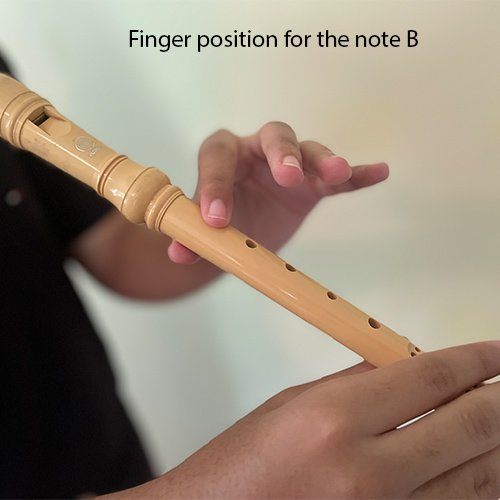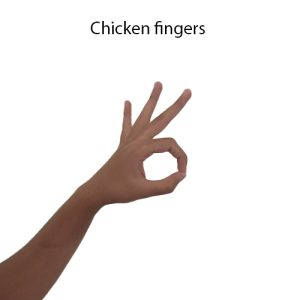Y3. Lesson 3. Present treble clef and letter names on lines
Prior learning: None
Duration: 30 minutes
Materials: None
Keywords: Beat, rhythm, singing, chanting, partners, rhymes, circle games.
Difficulty: ![]()
Prepare
Present
Treble clef and letter names on lines.
Practise
Letter names in a space.
 Melodic development
Melodic development
![]() Students explore the note names of a simple known song.
Students explore the note names of a simple known song.
- Project the graphic on the board.
- Teach that the song is See Saw, and instead of writing so-mi, students will use fixed letter names.
- Ask the class to sing the song using just the letter names of C and A.
- Ask if these two notes are on lines or in spaces. [Spaces].
- Ask students to write the letter names of the song in their notebooks.
 Rhythmic development
Rhythmic development
![]() Students determine the name of a song by clapping the rhythm.
Students determine the name of a song by clapping the rhythm.
- Project the three scores on the board.
- Ask students to clap the rhythm of the first song.
- Ask the name of the song and practice until secure. [Hot Cross Buns].
- Repeat for the second song [Bow Wow Wow].
- Repeat for the third song [Cobble Cobbler].
 Creative movement
Creative movement
![]() Students sing and use body percussion in a known song.
Students sing and use body percussion in a known song.
- Students are in a circle.
- Explain that students will use body percussion as they sing.
- Lead the class in singing Are You Sleeping?
- Clap your hands twice above your head whilst singing, “Are you sleeping?”.
- Clap on your chest twice whilst singing “Brother John”.
- Clap on your legs twice whilst singing “Morning bells are ringing”.
- Stamp twice whilst singing “Ding, dang, dong".
- When secure, ask students to discover new patterns, including patting and snapping.
 Listening
Listening
![]() Students determine the name of an instrument but the sound alone.
Students determine the name of an instrument but the sound alone.
- Explain that students will hear a selection of instruments.
- Play a track from the player and ask the name of the instrument.
- It is suggested that you start from low to high or vice versa.
- When a correct answer has been given, play another track and ask the name of the instrument.
- Continue with the other tracks.
- Ask the name of the orchestra's family to which the instruments belong.
 Visual learning
Visual learning
![]() Students discover the name of the treble clef and notes that sit on a line on the staff.
Students discover the name of the treble clef and notes that sit on a line on the staff.
- Project or print the treble clef on the staff.
- Point to the treble clef and name it as the sign used when note names are used.
- Students should practice drawing the treble clef in their notebooks.
- Project or draw the five notes on the board that sit on a line. [There are no barlines or time signatures]
- Point to and name each note in turn.
- Repeat with the class saying the notes.
- Ask the class if they can find an easy way to remember the five notes.
- Show how the four notes spell EGBDF.
- Ask students if they can think of other words using the letters EGBDF.
- Examples can include Every Good Boy Deserves Fruit, or Every Good Burger Deserves Fries.
- Ask students to compose their own acronym.
 Instruments
Instruments
![]() Students discover another one-note song on the recorder.
Students discover another one-note song on the recorder.


- Remind students how to hold the recorder and to use the chicken left-hand fingering to play the note B.
- With the recorder in their mouths, ask students to say the word 'too' in a whisper when they play a note. Explain this is called tonguing, which separates the notes.
- Have the class practice tonguing as they play the note B.
- Project or print the score for the first song, called B Happy.
- Students should play the first four B notes, take a short breath, and then play the next three B notes and pause for one beat, as indicated by the rest sign. They repeat the pattern for the next two measures.
- Remind students to count 1-2-3-4 in their heads as they play.
- The comma marking denotes where a breath should be taken.
 Part work
Part work
![]() Students clap an ostinato pattern while singing a known song.
Students clap an ostinato pattern while singing a known song.
- Lead the class in singing Circle Round Your Zero.
- Clap an ostinato pattern, such as ti-ti ta or ta, ta, ti-ti and ask students to clap the pattern back.
- Students should then clap the pattern and sing the song.
 Assess
Assess
Suggested lessons
Y1. Beat II

Y1. Beat III

Y1. Beat IV

